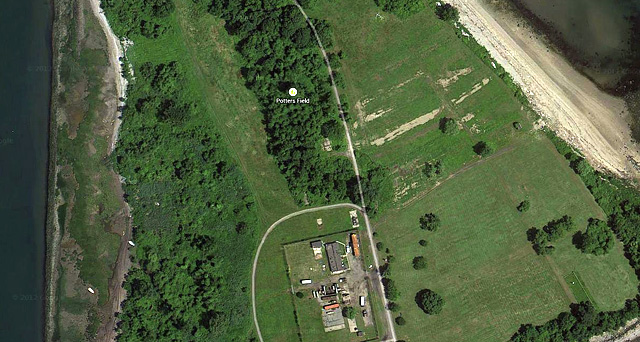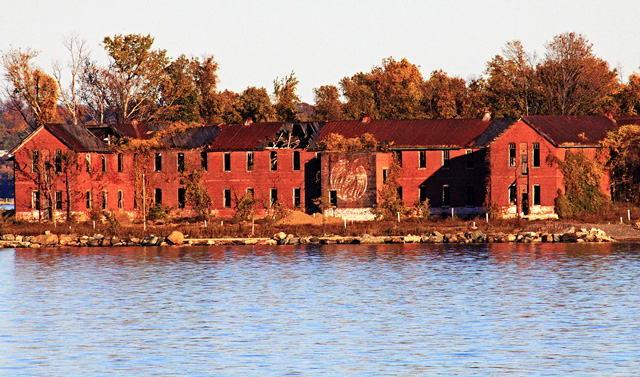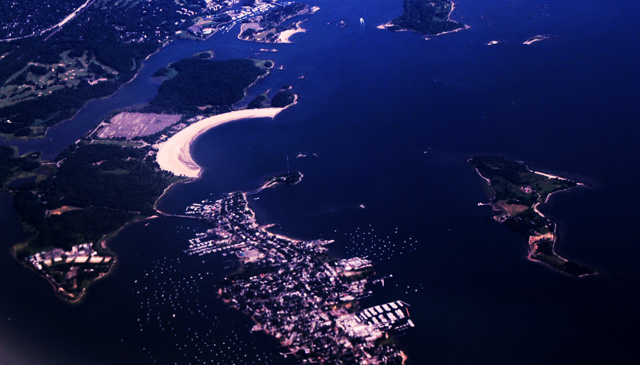Hart Island: A Graveyard for the Unknown and Indigent

An aerial view of Potter’s Field
By Evelyn Scalice
On an island near the city that never sleeps is a place where over 850,000 souls lay in permanent slumber. The bodies of the unclaimed, unidentified, stillborn infants, and those whose families had limited resources, rest in New York’s potter’s field — Hart Island.
A large part of the 131 acres has been used as a burial ground since the American Civil War. It is the largest tax-funded cemetery in the world. The Department of Corrections (DOC) operates the cemetery, with inmates from Rikers Island performing all of the burials.
One-third of the burials are of stillborn infants. The rest are adults. All bodies are placed in pine boxes with names written on the side. They are then buried in mass graves with each plot having one single marker.
The island has been home to a women’s mental asylum, a drug rehabilitation center, a boy’s workhouse, and a Nike missile base built during the Cold War. These historic buildings are currently being torn down to make room for more burials.

(Photo: cisco1970)
What is most surprising about Hart Island, is that so few people in the city know it exists or what it’s used for. The island has been cut off from the general public. Exceptions have been made for family members of the deceased who can go for “closure visits,” if they can provide a death certificate.
Until recently, even family members were limited to a small gazebo area near where the ferry docks. They could not visit specific grave sites. No photography is permitted either. Anyone who takes the ferry ride over must leave cell phones or cameras behind before entering the gazebo. Aside from these “closure visits,” the DOC grants very limited access to researchers and some journalists.

Up until a few years ago, burial records and specific plot locations were held by the DOC, which made it difficult for families to find information about their buried family members. In 2008, Melinda Hunt, of the Hart Island Project, obtained the records of 50,000 burials that took place between 1985 and 2007, through a Freedom of Information Act request. She also obtained GPS location information for graves to better assist those who are searching. The Hart Island Project database of burials today includes 32,765 adults and 27,769 infants, according to the organization’s site.
Hunt started the Hart Island Project after people started contacting her for help, when she wrote the book “Hart Island: Discovery of an Unknown Territory” in 1998 with the help of photographer Joel Sternfeld. There are now over 2,000 people that are looking for burial records, says Hunt. Many are mothers.
Over 600 stillborn infants are buried on the island every year. Some mothers of these children say that they weren’t told initially where their babies were buried. After giving birth, a social worker or hospital employee will ask what mothers would like to do with the remains of the infant. Hearing their options, some agree to a “city burial.” What many also don’t know is that a city burial means that their child will be laid to rest on Hart Island, where they cannot visit the graves.
In November 2013, faced with a lawsuit filed by eight women, the DOC agreed to grant them access to visit their infants’ graves, Hunt explains on the Hart Island Project site. “It sets a precedent for everyone to be able to have access,” says Hunt.
Although these women being granted access to the grave sites is a huge step forward, Hunt says she hopes the DOC will further loosen restrictions on visiting Hart Island. The New York City Council has recently introduced legislation to transfer oversight of the island to the Department of Parks and Recreation. “We’re hoping that the City Council will transfer jurisdiction…then the Department of Parks will run it and [they don’t] lock things up,” she says. “The public probably won’t have immediate access…but once it’s under the jurisdiction of parks, it’s a public park.”

Pelham Bay, City Island, Hart Island
Saved under Featured Slide, News

